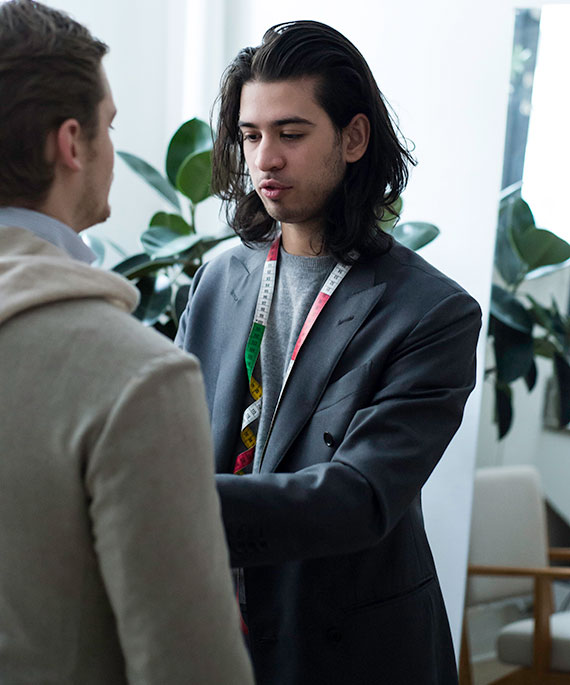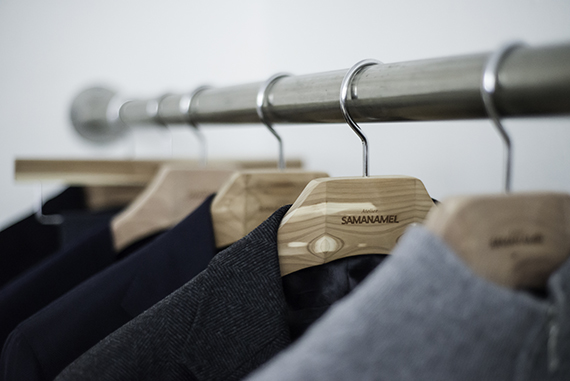Dag Granath, Saman Amel Atelier
Stockholm, Sweden
What business aspects have led to the success of Saman Amel Atelier?
I think it would be dishonest to neglect the fact that timing and good fortune had a big impact in the process. However, we started out producing ties which we sew ourselves here in Stockholm. Saman is a trained tailor and after having sewn dresses and jackets for a couple of friends he wanted to be able to merchandise a product to sell online. Having done this for a few years, we built a form of platform for our brand. People felt that it was genuine. Two young guys wanting to learn the craft, not taking any shortcuts on the way. So when we launched the atelier in late 2014 we had somewhat of a following already which meant orders started coming in pretty early.
Our market entry was also very timely in the sense that the average Stockholm customer has, over the past few years, grown an interest in products heavy in handicraft. Stockholm tends to be an early adopter of these sorts of things. As the general interest grew, I reckon we positioned ourselves as an alternative to the conventional approach to the custom made product and experience. We attracted a younger clientele that had a respect for the craft and the process, although wanted something less conservative than what they usually associated classic menswear with.
What do you think is the future of tailoring? Do you see technology replacing the essential art of tailoring for instance, cutting, measuring or producing bespoke suits?
We are very optimistic about the future. Not only for our brand but for the branch as a whole. Essentially, we think that the conventional fashion system is obsolete and as people are finding this out they seek other solutions. Frankly, we live in a consumer society where one’s identity is closely connected to one’s consumption patterns. Given this, it is not strange that people are starting to demand more. People do not want to associate their identity with a brand that have their stuff being made by child labour or that are constructed in lousy materials. They want to feel that they are paying for more than a logotype.
Also, we think that people are starting to turn away from the logic of fast-fashion and starting to appreciate the process of making something custom made. Yes, it takes a little longer and might cost a little more, but more and more people realize they would rather have one great jacket that is made specifically for them than three mediocre ones. The “see-now-buy-now” philosophy is simply not the way to go. People get stressed out about this mentality and also that logic obviously has side effects on our environment.
What is Saman Amel’s unique value proposition and how do you acquire your customers?
We really do not have a sales pitch. Sometimes we get the question: “why should I buy a jacket from you when I can buy two for the same price in a conventional retail store?” We definitely do not want to be elitist, but if a person has that type of outlook, maybe the conventional retail store is better for them.
However, when a client comes to our atelier we sit down with the client for a while. We have a coffee and get to know each other. This is essential for us to be able to help the client later in the process. Usually, the client might have some idea of what he needs or he might have seen some of the stuff we have made before. If the client has never had anything made for him before, we will in 90% of the cases suggest something very simple like a grey or a blue suit. Our goal is to make a product that the client will be able to wear a lot. We want to put focus on the parts of the wardrobe that really makes the difference.
If a client wants to have more than one product made the first time, we usually say no. We want to start of slow by making one garment per product group so that the client is not rushing. Perfection does not happen overnight (really, there is no such thing as perfection in tailoring) and the process of creating and developing the pattern specifically for the client can take time. When they have had their first product made and have worn it in, we go on to the next one. Now, the client is involved in the process and he will start to appreciate his clothes more than before. He starts to observe the small aspects that makes the difference between a garment that he likes, and a garment that he loves.
Address and info
Address
Kommendörsgatan 21
114 48 Stockholm
Website
www.samanamel.se



